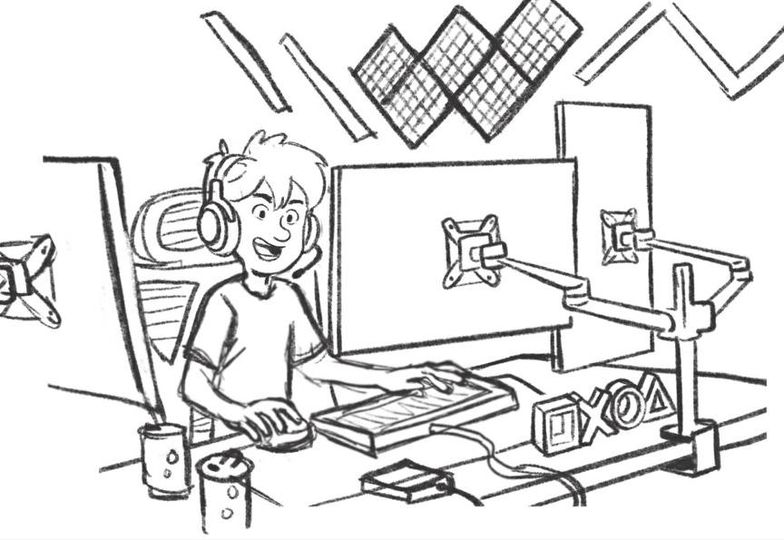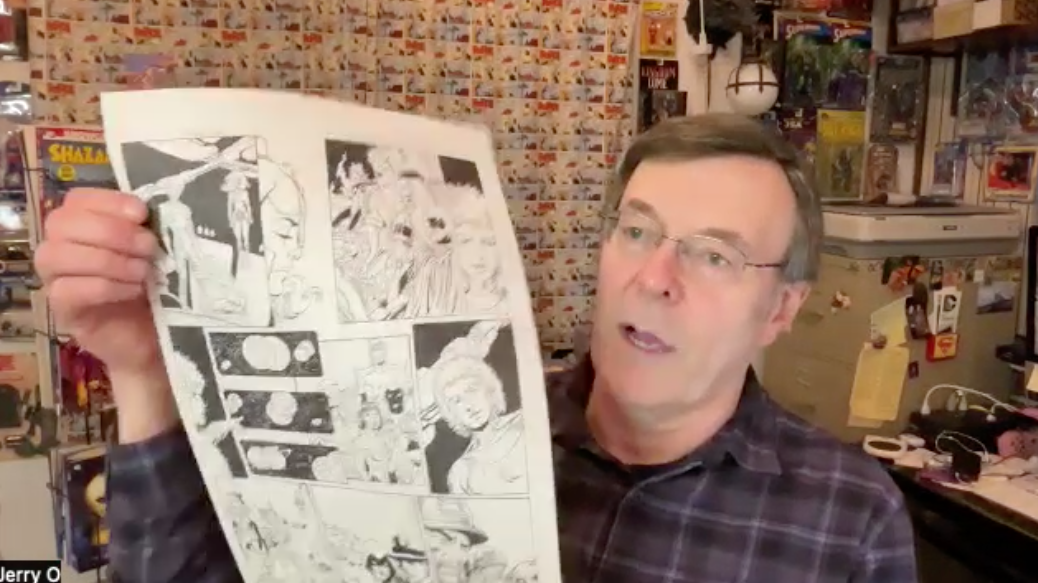|
As mentioned in a previous post, I'm writing a history about the groundbreaking comic book maxi-series Crisis on Infinite Earths for TwoMorrows Publishing. It's due to come out next year, the 40th anniversary of the series. I'm having the time of my life doing a deep dive on one of my greatest passions--comic books! I'm also just over 13,000 words into the manuscript, averaging about 1,000-1,200 words per day whenever I'm able to work on it. Unlike writing fiction, writing this book is an exacting process, especially considering how obsessive comic book fans can be about details. So, I feel a lot of pressure not only to get everything right but also to go as deep as possible into every aspect of the topics I'm writing about. Sometimes it feels like I'm writing a master's thesis or a PhD dissertation. At any rate, I'm learning a ton, I'm loving every minute of it, so far at least, I think it's one of the best things I've ever written.
Just for fun, below is a photo of Crisis scribe Marv Wolfman (r) and Len Wein (l), who helped Marv in the early stages of plotting Crisis and who also oversaw the publication of Who's Who in the DC Universe, taken sometime in the early 1980s, shortly before Crisis came out.
0 Comments
It's great to see the first three books in the Game On series selling well on Amazon and from Bakken Books. I finished writing book 4, "Totally Tilted," last week, and I just knocked off the first chapter of book 5, "Level Up Live," yesterday. Hopefully, I'll be able to finish book 5 by the end of July, then it's on to book 6, the final item in the series. So, hop on board now, and you won't have long to wait to see how the story plays out!
The first three books in my new series, Game On, are among the top new releases on Amazon's Children's Computer Game books. You can get them here.
Here's a brief description: When Canada’s largest national fishing tournament makes a stop at Lark Lake, located just outside the small prairie of Milligan Creek, Saskatchewan, everyone gets in on the action. They’re all hoping to catch the big one—not to mention one of the many cash prizes up for grabs. But a long-simmering grudge threatens to derail everything, as does a protest of the tournament, led by local environmentalist Henrietta Blunt. Hilarity and chaos ensue as the anglers hit the lake. And it isn’t long before it all goes off the hook, as most things in Milligan Creek usually do!
Available now on Amazon as a paperback, hardcover, or ebook. The first three books in my new series about a group of teens who are battling to achieve video game greatness are now available on Amazon and will soon be available on Bakken Books. Here's a brief description of the series.
The series is called "Game On!" and it's for kids ages 8-12, particularly those who are into video games. Here's a brief overview from the publisher's website. Wyatt Kelsey has a BIG dream—to become a famous gamer. When he’s playing for kicks, he’s unbeatable, dominating his opponents. But the moment stakes are high, he chokes. You can pre-order book 1, The Stream Team, now and get 30% off Bakken's other series (including my own Milligan Creek series, books 1-6, and Danica Panica). Books 2 and 3 in the series have already been written and will be released as soon as all the artwork is complete.
The first three books in a new six-book series called "Game On" that I'm writing for Bakken Books, is coming out later this spring. Here's a rough sketch for one of the interior illustrations in book 1, The Stream Team.
I just made a deal to write a book about one of my favorite topics ever--comics! To give you a hint as to what specific comic book series I'm writing about, take a look at the photo below. If you don't recognize the face, the artwork he's holding up may give you a clue. More news soon!
That's right, I just finished the first draft of Off the Hook, book 8 in the Milligan Creek Series. As always, I had a blast writing it. In case the title doesn't make it clear, it's about a fishing tournament and a long-festering feud, and it all comes to a head at Lark Lake, just outside of Milligan Creek, Saskatchewan. The book will be available later this spring, just in time for fishing season!
It's called Total Bots, and it's book 2 in the Game On series, with book 1, The Stream Team, coming out soon from Bakken Books in March. I'm going to take a short break to finish Off the Hook, book 8 in the Milligan Creek series, then it's on to book 3 of Game On, One-Shot Wonders. I never imagined I'd be writing a series about a bunch of kids trying to make it big on Fortnite, but I'm having a blast working on it, and I can't wait to get it out there.
|
Kevin MillerBrief thoughts and updates on writing, publishing, and life Archives
June 2024
Categories
All
|
 RSS Feed
RSS Feed









